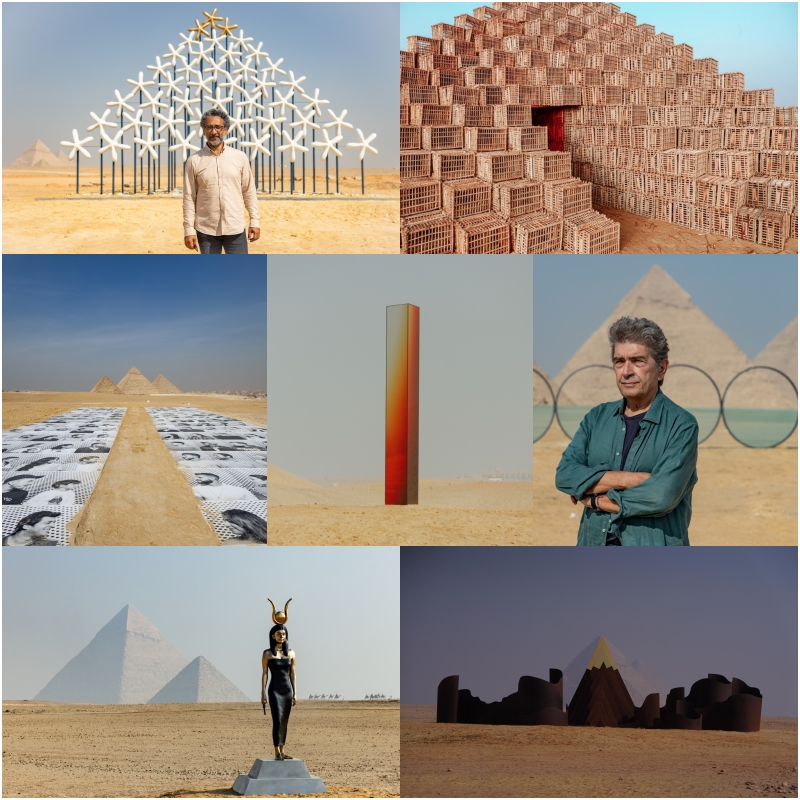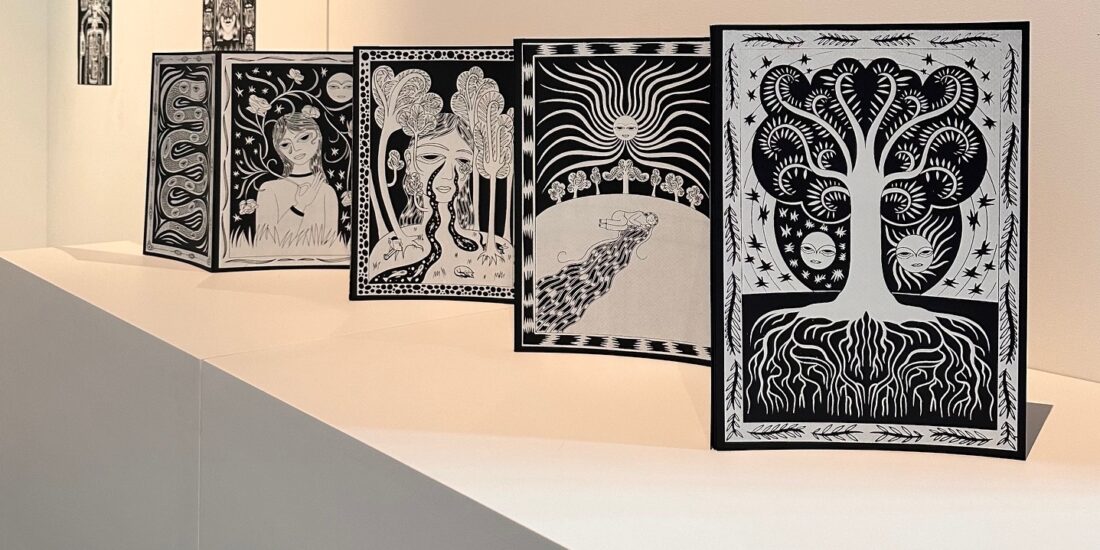14 Artists, One Historic Landmark
Against the majestic backdrop of the Pyramids of Giza and the sprawling plateau that cradles this ancient wonder, the third edition of the annual international exhibition, “Forever Is Now,” was launched. Organised and curated by “CulturVator – Art D’Egypte,” this extraordinary showcase stands as a testament to the profound significance of cultural exchange among artists. It brought together 14 artists from around the world who presented their artwork at this historic landmark.
“The exhibition highlights the importance of cultural exchange among artists and showcases the position of human creativity at the heart of history and ancient Egyptian civilization. The exhibition is organized and curated by “CulturVator – Art D’Egypte” under the auspices of the Ministries of Tourism and Antiquities, Foreign Affairs, Culture, and the Egyptian National Commission for UNESCO,” says Nadine Abdel Ghaffar, founder of CulturVator. “It brings together 14 artists from the region and various countries worldwide to engage artistically with one of the most iconic historical landmarks, offering contemporary artworks that blend the present with the past, all while echoing history, the land, the environment, and humanity.”
Ghaffar, also stated, “The ‘Forever Is Now’ exhibition has achieved outstanding success in attracting attention to contemporary art since its first edition. This year, the exhibition raises questions about the new era of technology and cultural change that the world is going through, by combining cultural heritage with the rich diversity of contemporary art practices. The exhibition also highlights the importance of cultural exchange among artists, demonstrating the position of human creativity at the heart of pulsating history and ancient Egyptian civilization, especially with the presentation of the largest collection of artworks by local and international artists, a step that will undoubtedly contribute to promoting Egyptian tourism.”
In the third edition of the “Forever Is Now” exhibition, 14 local and international artists participated. These artists include the Belgian Arne Quinze, the Brazilian Arthur Lescher, the Emirati Azza Al-Qubaisi, the American Carol Feuerman, the Greeks Dionysios and Costas Varotsos, the French duo JR and Stéphane Breuer, the Egyptian Mohamed Banawy, the Argentinean Pilar Zeta, the Bahraini Rashid Al Khalifa, the Saudi Rashed Al Shashai, the Dutch Sabine Marcelis, and the Egyptian-British Sam Shendi. The participating artists expressed the importance of this global event, hoping that their artistic works receive positive and inspiring responses.
As Above, So Below by Mohamed Banawy
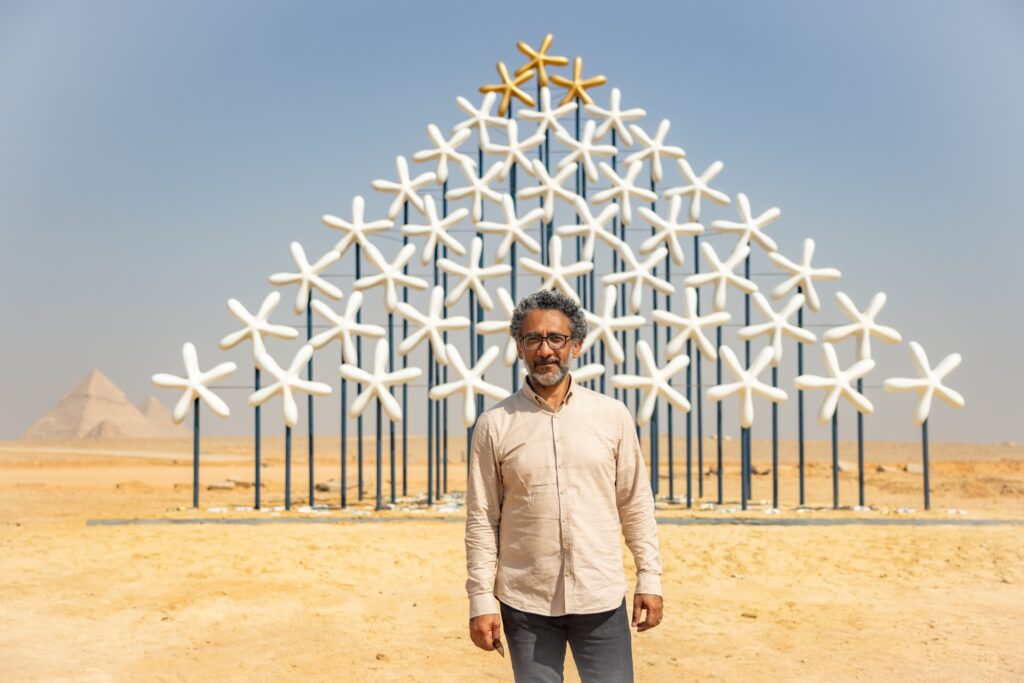 Egyptian artist Mohamed Banawy said, “It’s an exciting adventure to showcase my artistic work alongside our great civilization in one of the most significant archaeological areas in the world.”
Egyptian artist Mohamed Banawy said, “It’s an exciting adventure to showcase my artistic work alongside our great civilization in one of the most significant archaeological areas in the world.”
He added: “My work is titled ‘As Above, As Below,’ the phrase that came from the emerald tablets written by the god Thoth. It represents keys that speak to us from the realm of the spirit, not from the realm of the mind. The material world is a reflection of another world existing in another dimension. ”
Inside Out by JR
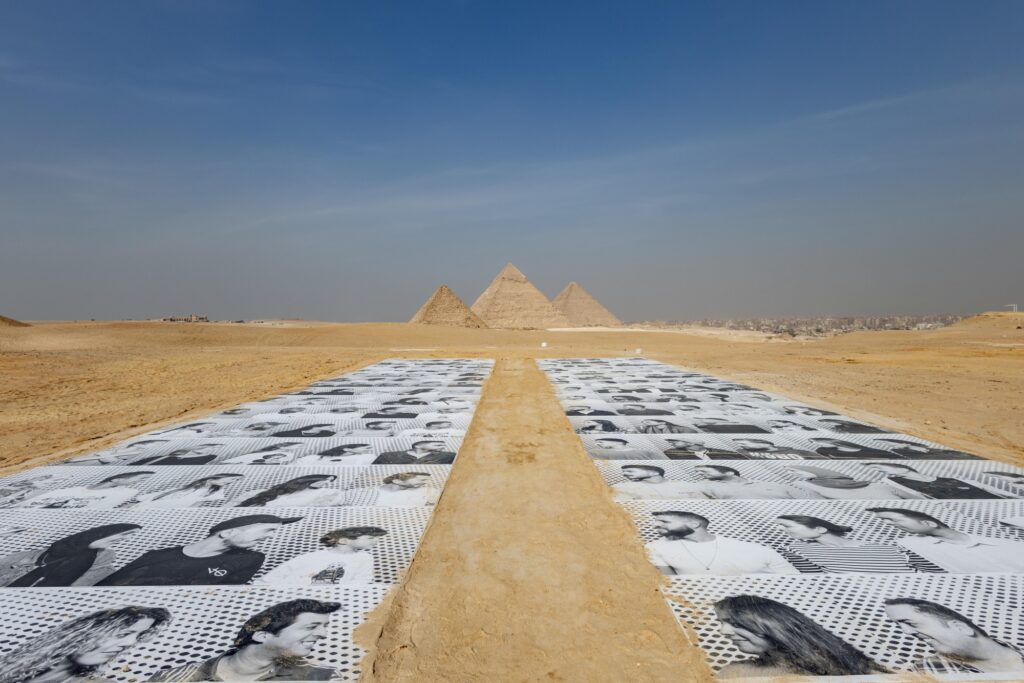 World-renowned French artist JR exhibits freely in the streets of the world, catching the attention of people who are not typical museum visitors, from the suburbs of Paris to the slums of Brazil to the streets of New York, pasting huge portraits of anonymous people, from Kibera to Istanbul, from Los Angeles to Shanghai and leaves space empty for an encounter between the subject/protagonist and the passer-by/interpreter.
World-renowned French artist JR exhibits freely in the streets of the world, catching the attention of people who are not typical museum visitors, from the suburbs of Paris to the slums of Brazil to the streets of New York, pasting huge portraits of anonymous people, from Kibera to Istanbul, from Los Angeles to Shanghai and leaves space empty for an encounter between the subject/protagonist and the passer-by/interpreter.
Inside Out Giza was the first Inside Out Photobooth in Egypt, with more than 3,600 participants visiting the pyramid-shaped interactive photo booth during the second edition of Forever Is Now in 2022. The participants received a large-scale black and white portrait that they got to paste onto a billboard and temporarily see together with the Great Pyramids of Giza. This year, making an even bigger ephemeral statement in front of the timeless monuments, the pictures were showcased collectively in conversation with the UNESCO world heritage site.
Horizon by Costas Varotsos
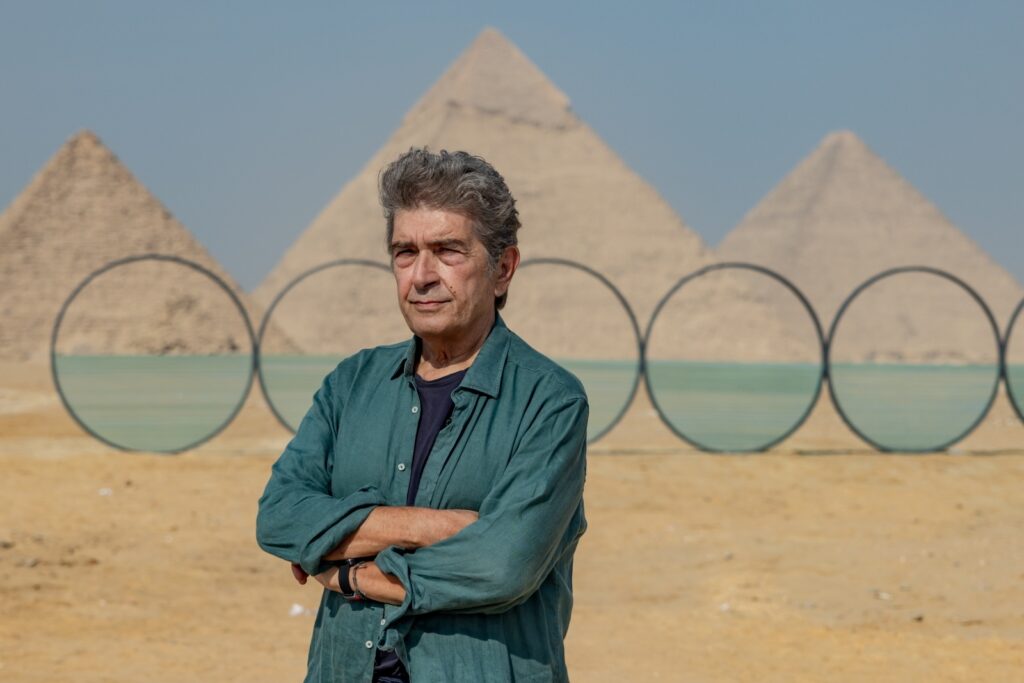 The Greek artist Costas Varotsos participated with his project “Horizon,” which focuses on the relationship between the Nile River and the Giza Plateau, emphasising its significance for the world. He says, “This new horizon is defined through eight circles in which the world revolves. The celestial dome and the cycle of life expressed through the geometric shape of the circle are concepts related to the engineering of the pyramids and their history. The importance of the artistic work is to establish a connection between all the natural elements of the surrounding area. For me, the horizon has always been a prediction of the future, towards something coming, defining the concept of the horizon in space, but at the same time determining the position toward life.”
The Greek artist Costas Varotsos participated with his project “Horizon,” which focuses on the relationship between the Nile River and the Giza Plateau, emphasising its significance for the world. He says, “This new horizon is defined through eight circles in which the world revolves. The celestial dome and the cycle of life expressed through the geometric shape of the circle are concepts related to the engineering of the pyramids and their history. The importance of the artistic work is to establish a connection between all the natural elements of the surrounding area. For me, the horizon has always been a prediction of the future, towards something coming, defining the concept of the horizon in space, but at the same time determining the position toward life.”
Egyptian Woman as Goddess Hathor by Carol Feuerman
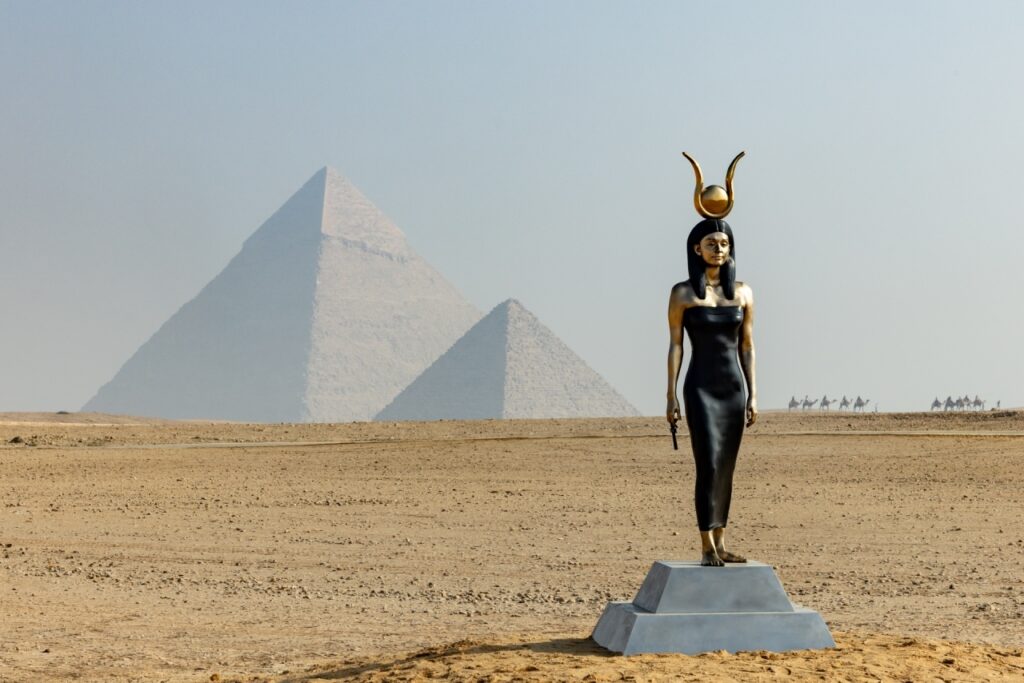 From the United States, the visual artist Carol Feuerman contributed with her project “Egyptian Woman in the Form of the Goddess Hathor.” She says, “I specifically created this piece for the third edition of ‘Forever Is Now’ due to my deep passion for the concept it embodies. This artwork represents my personal interpretation of Hathor, where she is depicted as a contemporary woman embodying the essence of the goddess. While the similarities between my sculptures and the goddess may not be immediately evident, the resonance I feel with Hathor is strong. My artistic talent lies in presenting realistic sculptures of women celebrating their natural beauty and opulence, and in these sculptures, I strive diligently to represent the fluidity that reminds us of water, just as Hathor is also associated with water, fertility, love, beauty, music, joy, and motherhood. I sought to honour Hathor through this sculpture.”
From the United States, the visual artist Carol Feuerman contributed with her project “Egyptian Woman in the Form of the Goddess Hathor.” She says, “I specifically created this piece for the third edition of ‘Forever Is Now’ due to my deep passion for the concept it embodies. This artwork represents my personal interpretation of Hathor, where she is depicted as a contemporary woman embodying the essence of the goddess. While the similarities between my sculptures and the goddess may not be immediately evident, the resonance I feel with Hathor is strong. My artistic talent lies in presenting realistic sculptures of women celebrating their natural beauty and opulence, and in these sculptures, I strive diligently to represent the fluidity that reminds us of water, just as Hathor is also associated with water, fertility, love, beauty, music, joy, and motherhood. I sought to honour Hathor through this sculpture.”
Treasures by Azza Al Qubaisi
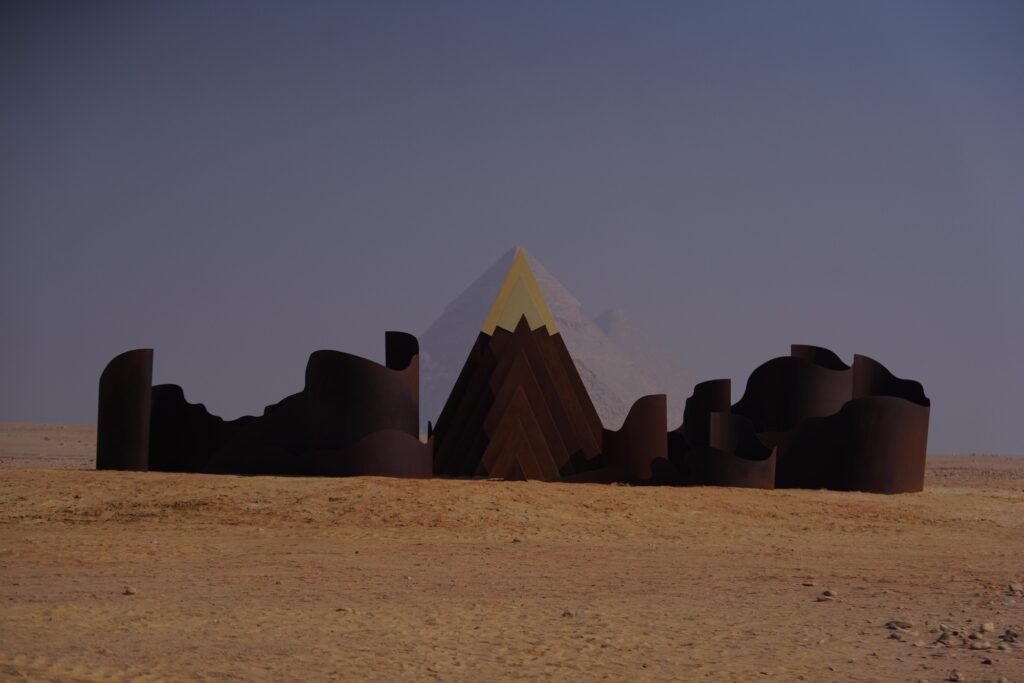 Emirati artist Azza Al Qubaisi is a jewellery artist, designer, and sculptor. A fervent advocate of all things locally produced and sustainable, she uses materials that are part of the fabric of life before the development of the UAE to create works that explore the evolving traditions, culture, and identity of the Emirates. “Treasures to me is a piece that represents a journey that effortlessly captures the mysteries, shapes, patterns, and textures of the desert landscape together with the cultural memories, stories, and motifs from the past,” she says.
Emirati artist Azza Al Qubaisi is a jewellery artist, designer, and sculptor. A fervent advocate of all things locally produced and sustainable, she uses materials that are part of the fabric of life before the development of the UAE to create works that explore the evolving traditions, culture, and identity of the Emirates. “Treasures to me is a piece that represents a journey that effortlessly captures the mysteries, shapes, patterns, and textures of the desert landscape together with the cultural memories, stories, and motifs from the past,” she says.
The Transparent Pyramid by Rashid Al Shashai
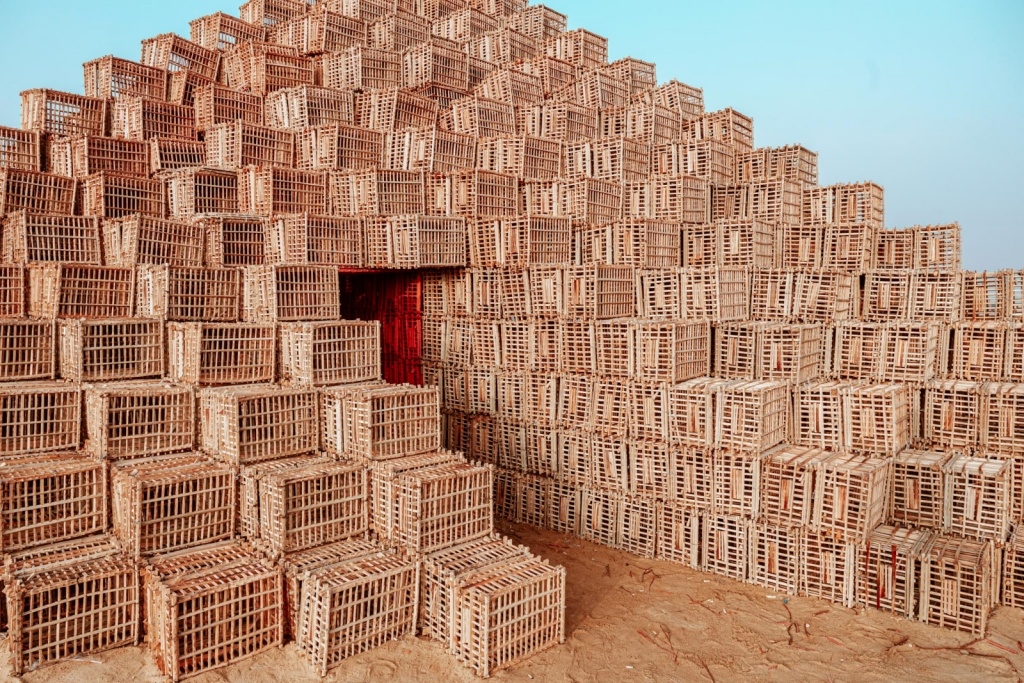 Saudi artist Rashed Al Shashai states, “The art project I present, prepared specifically for the site, represents a dance between the past and the present, blurring the lines between traditional and modern, and renewing our perceptions of art, heritage, science, and sustainable practices.
Saudi artist Rashed Al Shashai states, “The art project I present, prepared specifically for the site, represents a dance between the past and the present, blurring the lines between traditional and modern, and renewing our perceptions of art, heritage, science, and sustainable practices.
Titled ‘The Transparent Pyramid’ and using the material of palm fronds, an ancient craft from Egypt, to pay tribute to the history of the pyramids, while providing a contemporary interpretation of their impact on our development processes in our region, and affirming the value of preserving traditional methods alongside innovation and creativity. The project aims to encourage the audience to think about the potential for sustainable practices in contemporary art and design, and it contemplates the human aspect of heritage and the dedication that has always carried it. It serves as a deliberate tribute to the eternal legacy of traditional craftsmanship and the importance of sustainable practices.”
Ra by Sabine Marcelis
 The Dutch artist Sabine Marcelis is contributing to the art project with her piece “Ra.” She expresses her enthusiasm and honour for presenting her work in such a distinguished location. She mentioned that her art installation is inspired by the sun, and this site holds special meaning for her, especially being the birthplace of the sundial. She creates an artwork that not only represents a sundial but also harnesses the power of the sun, transforming it into energy. This reflects her deep respect for ancient Egyptian culture and their reverence for the sun god Ra.
The Dutch artist Sabine Marcelis is contributing to the art project with her piece “Ra.” She expresses her enthusiasm and honour for presenting her work in such a distinguished location. She mentioned that her art installation is inspired by the sun, and this site holds special meaning for her, especially being the birthplace of the sundial. She creates an artwork that not only represents a sundial but also harnesses the power of the sun, transforming it into energy. This reflects her deep respect for ancient Egyptian culture and their reverence for the sun god Ra.
Mirror Gate by Pilar Zeta
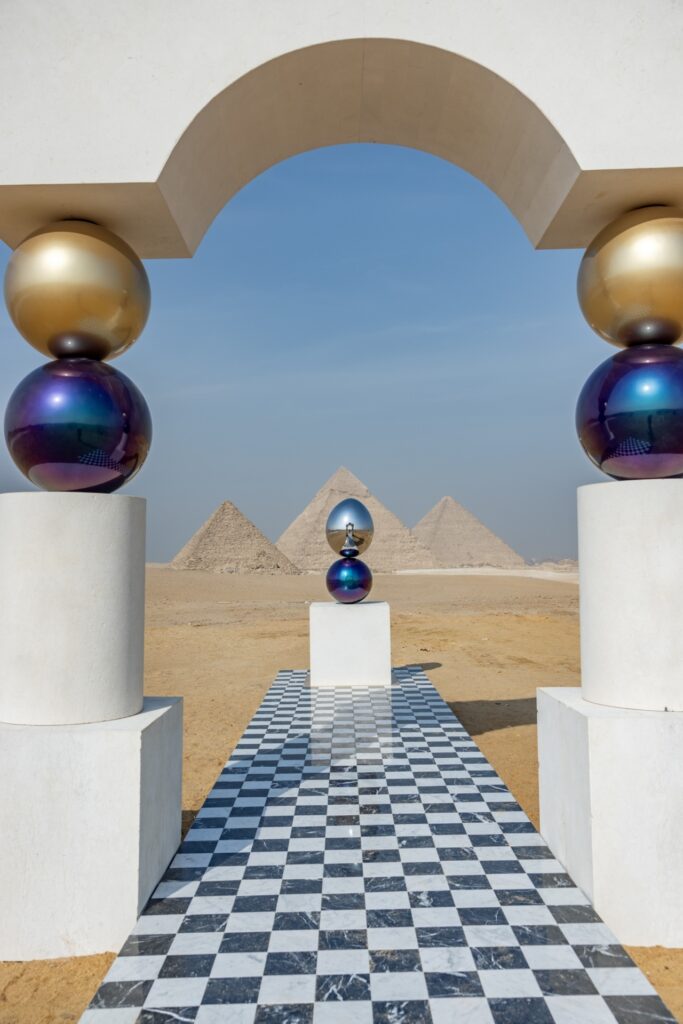 Argentinian artist Pilar Zeta introduced her artistic project “Mirror Gate,” stating that it was inspired by her fascination with Egyptian culture and the ancient mysticism in Egypt. She considers this gate to be significant, serving as a multidimensional portal connecting past and present, blending natural and artificial materials from the post-industrial era. She invites viewers to reflect upon their infinite potential when they see their reflections inside the pyramids, drawing connections to the limitless possibilities found in Egyptian mythology.
Argentinian artist Pilar Zeta introduced her artistic project “Mirror Gate,” stating that it was inspired by her fascination with Egyptian culture and the ancient mysticism in Egypt. She considers this gate to be significant, serving as a multidimensional portal connecting past and present, blending natural and artificial materials from the post-industrial era. She invites viewers to reflect upon their infinite potential when they see their reflections inside the pyramids, drawing connections to the limitless possibilities found in Egyptian mythology.

